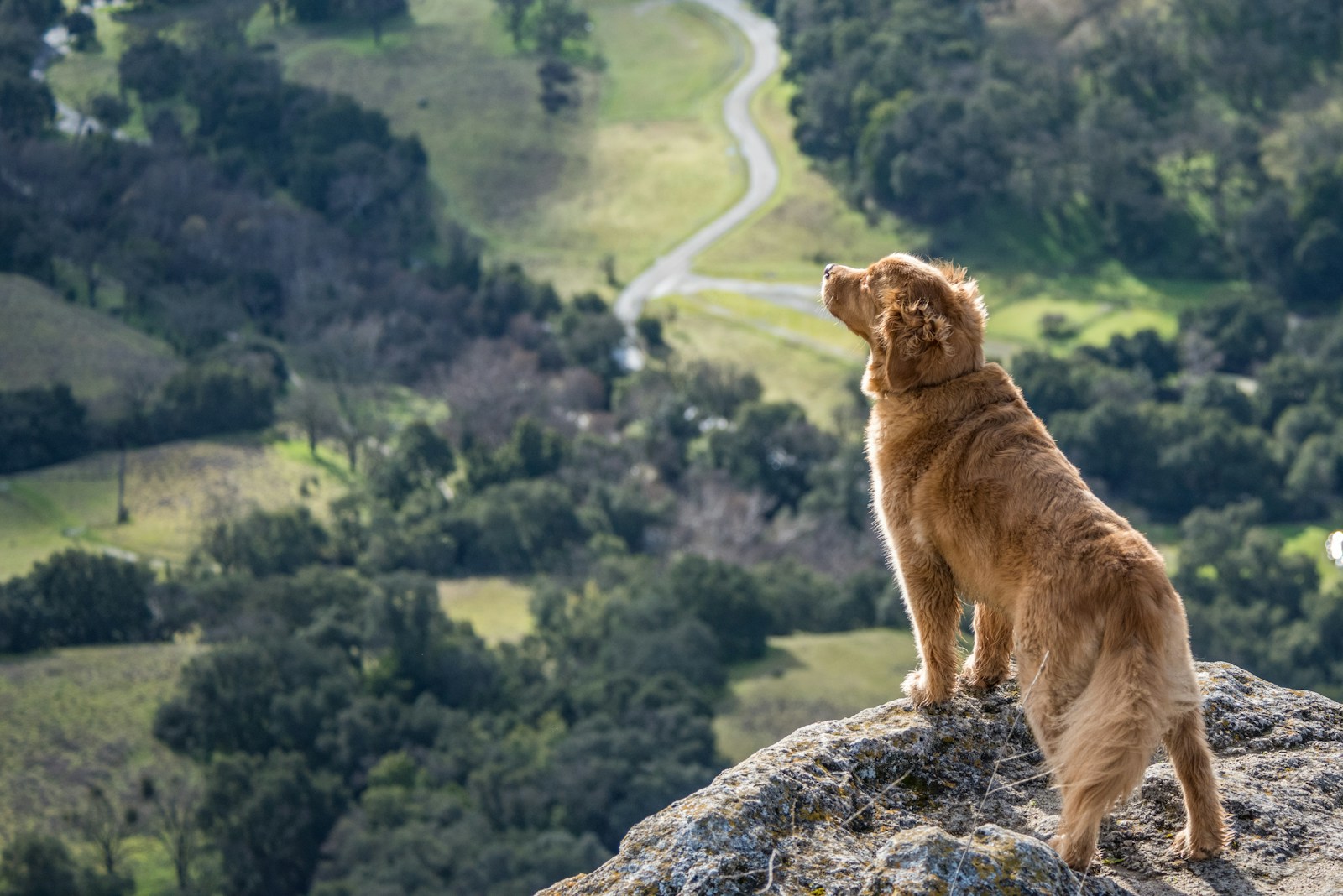For outdoor enthusiasts with four-legged companions, finding the perfect national park for hiking can be both exciting and challenging. While many national parks have restrictions on where dogs can and cannot go, several spectacular parks across the United States welcome canine hikers on designated trails. These dog-friendly national parks offer breathtaking landscapes, diverse terrain, and unforgettable adventures for both you and your furry friend. Before embarking on your journey, it’s essential to understand park-specific regulations, prepare properly for the conditions, and ensure your dog is ready for the adventure ahead. Let’s explore some of the best national parks where you and your canine companion can hit the trails together and create lasting memories in America’s natural treasures.
Acadia National Park, Maine

Acadia National Park stands as one of the most dog-friendly national parks in the United States, with over 100 miles of hiking trails and 45 miles of carriage roads open to leashed pets. The park’s diverse landscape offers everything from rocky coastlines and dense forests to mountain summits with panoramic ocean views. Popular dog-friendly trails include the Ocean Path, which follows the scenic shoreline for about two miles, and the more challenging Gorham Mountain Trail, which rewards hikers with spectacular views of the Atlantic Ocean. During summer months, pets are restricted from designated swimming beaches, but dogs are welcome on most beaches during the off-season. Remember that Acadia’s terrain can be rugged in places, so consider your dog’s fitness level and paw protection needs before tackling some of the more difficult trails.
Cuyahoga Valley National Park, Ohio
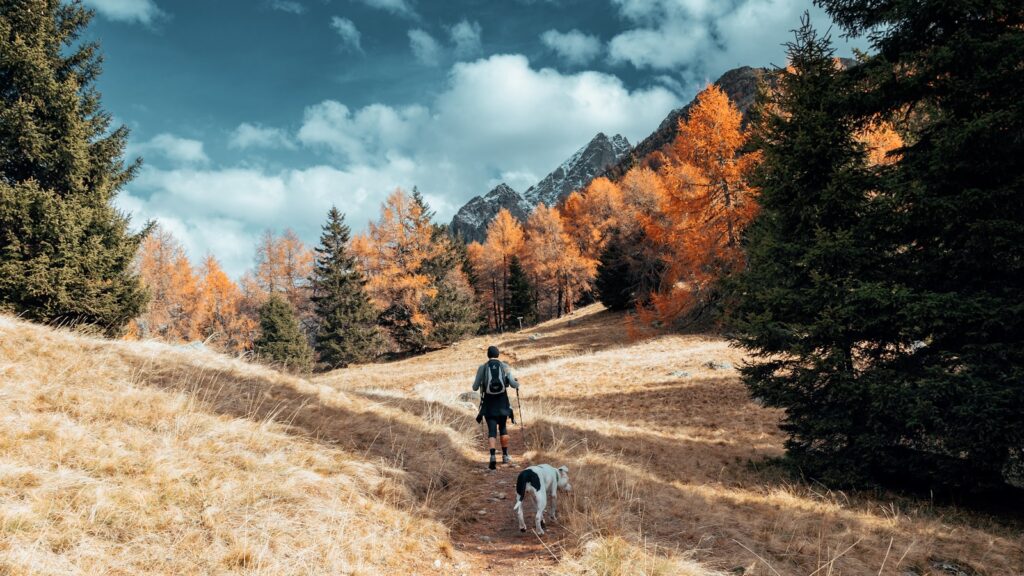
Located between Cleveland and Akron, Cuyahoga Valley National Park provides a surprising oasis of natural beauty in Ohio’s urban landscape, with nearly all of its 125+ miles of trails open to leashed dogs. The park’s centerpiece, the Ohio & Erie Canal Towpath Trail, offers a flat, accessible 20-mile path perfect for dogs of all ages and abilities as it follows the historic canal route through wetlands, meadows, and forests. For more adventurous hikers and pets, the Brandywine Gorge Trail loops around the impressive 65-foot Brandywine Falls, offering gorgeous scenery and moderately challenging terrain. The park’s varied ecosystem features numerous streams and shallow rivers where dogs can cool off during summer hikes, though always maintain control of your pet near water features. Cuyahoga Valley’s accessibility, diverse terrain options, and year-round beauty make it an ideal destination for dog owners seeking national park experiences without extensive pet restrictions.
Grand Canyon National Park, Arizona

While the Grand Canyon might seem surprising on this list, the South Rim offers several dog-friendly options that still showcase the park’s magnificence. Leashed pets are permitted on all trails above the rim, including the spectacular 13-mile Rim Trail that provides countless breathtaking viewpoints of the canyon without the steep descents that would be challenging for most dogs. The paved portion of the Rim Trail is particularly accessible, making it suitable for dogs of various fitness levels while still offering those iconic Grand Canyon vistas. The Greenway Trail system on the South Rim also welcomes dogs and connects various viewpoints and visitor facilities through forested areas. While your dog can’t join you on trails below the rim into the canyon itself, the South Rim’s pet-friendly paths offer enough stunning scenery and exercise opportunities to make this iconic park worth visiting with your canine companion.
Shenandoah National Park, Virginia

Shenandoah National Park stands out as one of the most dog-friendly national parks in the system, with over 500 miles of trails where leashed pets are permitted, including parts of the famous Appalachian Trail. The park’s rolling Blue Ridge Mountain terrain offers spectacular views of Virginia’s Piedmont region and the Shenandoah Valley through numerous overlooks along Skyline Drive. For an immersive forest experience, the Story of the Forest Trail provides a gentle 1.8-mile circuit through lush woodlands, while the more challenging Rose River Loop offers a 4-mile trek featuring beautiful waterfalls ideal for dogs who enjoy splashing in streams. During autumn, the park’s spectacular fall colors create an especially magical hiking experience as you and your dog traverse trails covered in golden and crimson foliage. Shenandoah’s abundance of wildlife means keeping your dog leashed is particularly important, both for their safety and to protect the natural inhabitants of this biodiverse ecosystem.
Great Sand Dunes National Park, Colorado
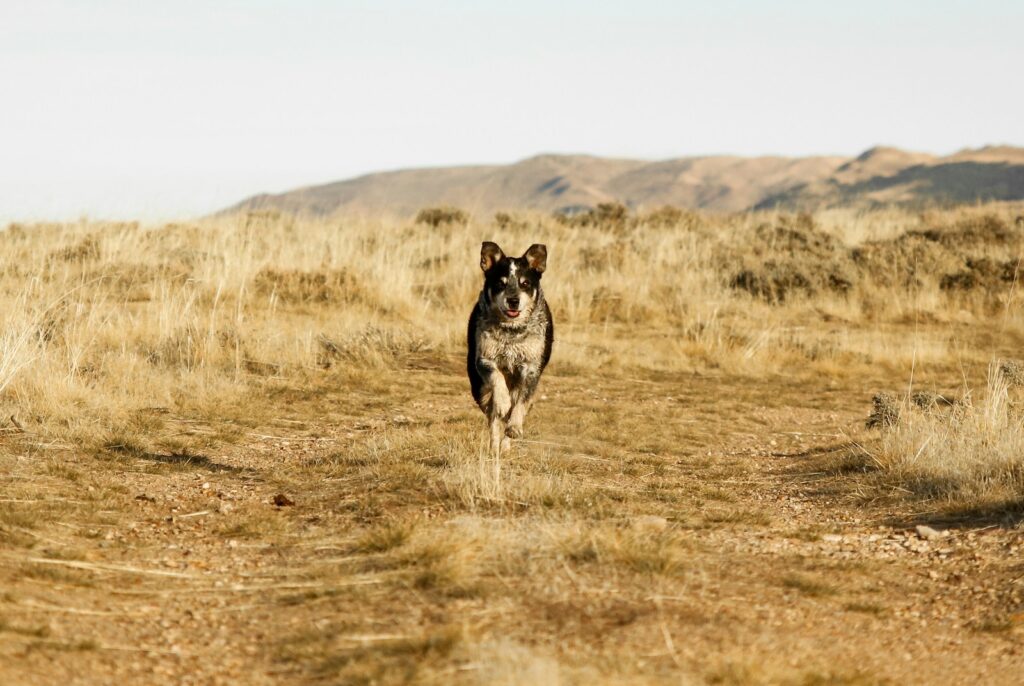
Great Sand Dunes National Park offers a unique landscape where dogs can experience North America’s tallest sand dunes against the backdrop of the stunning Sangre de Cristo Mountains. Unlike many parks, Great Sand Dunes permits leashed pets on the main dunefield, allowing for an unusual adventure as you and your dog climb and explore the massive sand formations that can reach heights of over 700 feet. The seasonal Medano Creek, which flows at the base of the dunes during spring and early summer, provides a refreshing splash zone for dogs after dunefield explorations. Beyond the dunes, dogs are welcome on established roadways and in developed areas of the park, though they cannot join you on backcountry trails or wilderness areas. Be mindful that sand can become extremely hot during summer months, potentially burning sensitive paw pads, so early morning or evening hikes are recommended when temperatures are lower.
New River Gorge National Park, West Virginia

As America’s newest national park, New River Gorge welcomes dogs on nearly all of its trails, making it an excellent destination for hikers with canine companions. The park features over 100 miles of hiking paths that wind through dense Appalachian forests, along rushing streams, and to spectacular viewpoints overlooking the dramatic gorge and one of the oldest rivers in North America. The Endless Wall Trail, voted one of the best hikes in the park, offers moderate terrain and breathtaking views of the gorge and the iconic New River Gorge Bridge. For a more historically focused experience, the Kaymoor Miners Trail takes you and your dog past abandoned mine sites while descending into the gorge through lush forest. The park’s abundant water features, including cascades and riverside paths, provide opportunities for your dog to cool off during warmer months.
Olympic National Park, Washington

Olympic National Park’s diverse ecosystems include coastal beaches, temperate rainforests, and alpine meadows, with select areas open to leashed dogs. The coastal portions of the park are particularly dog-friendly, with pets permitted on specific beaches including Rialto Beach (north of Ellen Creek), Ruby Beach, and Kalaloch Beach. These Pacific Northwest shorelines offer dramatic sea stacks, tide pools, and driftwood-strewn landscapes perfect for exploration with your four-legged friend. Within the forested regions, the Peabody Creek Trail near the visitor center provides a serene 0.5-mile loop through old-growth forest that’s accessible for most dogs. The Spruce Railroad Trail along Lake Crescent offers a longer 8-mile route with stunning lake views and relatively flat terrain suitable for extended hikes. While Olympic’s interior wilderness trails and rainforest areas generally prohibit pets, the permitted areas still showcase some of the park’s most spectacular and diverse landscapes.
Mammoth Cave National Park, Kentucky

While dogs cannot enter the famous cave system that gives this park its name, Mammoth Cave National Park offers over 70 miles of surface trails where leashed pets are welcome. These paths wind through hardwood forests, along river valleys, and across scenic bluffs in Kentucky’s rolling hill country. The Green River Bluffs Trail provides a 1.3-mile loop with beautiful overlooks of the Green River, while the Cedar Sink Trail leads to a fascinating karst depression where an underground river emerges briefly before disappearing again. For longer excursions, the park’s North Side trails offer more remote hiking experiences through mature forests with abundant wildlife viewing opportunities. The park’s surface features, including natural springs, sinkholes, and diverse woodland ecosystems, provide a rich and varied hiking experience even without accessing the underground cave system. Many trails connect to former homesteads and historic sites, adding cultural interest to your natural explorations.
Hot Springs National Park, Arkansas

Hot Springs National Park uniquely blends natural and historic elements in an urban setting, with most of its trails open to leashed dogs. The park’s 26 miles of hiking paths wind through the forested Ouachita Mountains, offering a range of difficulty levels suitable for various canine abilities. The moderate Sunset Trail, the park’s longest at 10 miles, can be broken into segments and features diverse terrain including creeks, forests, and mountain views. For a more leisurely stroll, the Grand Promenade is a brick-paved pathway overlooking historic Bathhouse Row, perfect for dogs who prefer easier walking surfaces. While your dog cannot enter the bathhouses or thermal spring areas, the surrounding trails provide ample opportunities to experience the park’s natural beauty. The park’s location adjacent to the city of Hot Springs means convenient access to pet-friendly accommodations and services, making it logistically easier for extended visits with your dog.
Voyageurs National Park, Minnesota

This water-based park in northern Minnesota offers a unique experience for adventurous dogs and their owners, with access primarily by boat to numerous islands and peninsulas. Leashed pets are allowed on all developed areas and most trails throughout the park, including the Kabetogama Lake Overlook Trail, which offers spectacular views of the park’s expansive waterways. The Blind Ash Bay Trail provides a 2.5-mile journey through boreal forest to a secluded bay perfect for dogs who enjoy both hiking and shoreline exploration. For owners with canoes or kayaks, the park offers nearly 300 designated campsites on islands and remote shorelines where dogs are welcome, creating opportunities for multi-day adventures. During winter months, many of the park’s frozen lakes become accessible by snowshoe, cross-country ski, or snowmobile, opening up even more territory for cold-weather exploration with properly equipped canine companions.
Great Basin National Park, Nevada
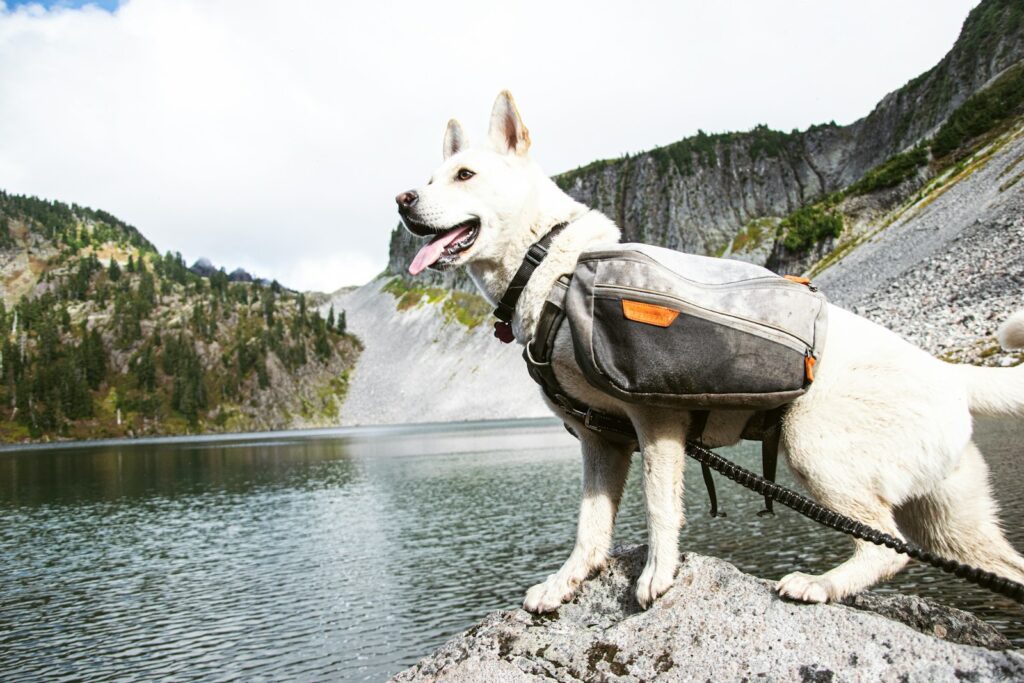
Located in eastern Nevada’s high desert, Great Basin National Park permits leashed dogs on all trails outside of the Lehman Caves area, offering access to alpine lakes, ancient bristlecone pine forests, and desert mountain landscapes. The Alpine Lakes Loop Trail provides a moderate 2.7-mile circuit past two mountain lakes with stunning views of 13,063-foot Wheeler Peak, the park’s highest point. For a truly unique experience, the Bristlecone Pine Trail leads through groves of these ancient trees, some over 3,000 years old, creating an almost mystical hiking environment you can share with your dog. The park’s elevation range from 5,000 to over 13,000 feet creates diverse ecosystems with abundant wildlife viewing opportunities, though this also means weather can change rapidly, so come prepared with layers for both you and your pet. Great Basin’s remote location and limited visitation compared to more famous parks means you’ll often find solitude on trails, perfect for dogs who prefer quieter hiking experiences.
Buffalo National River, Arkansas
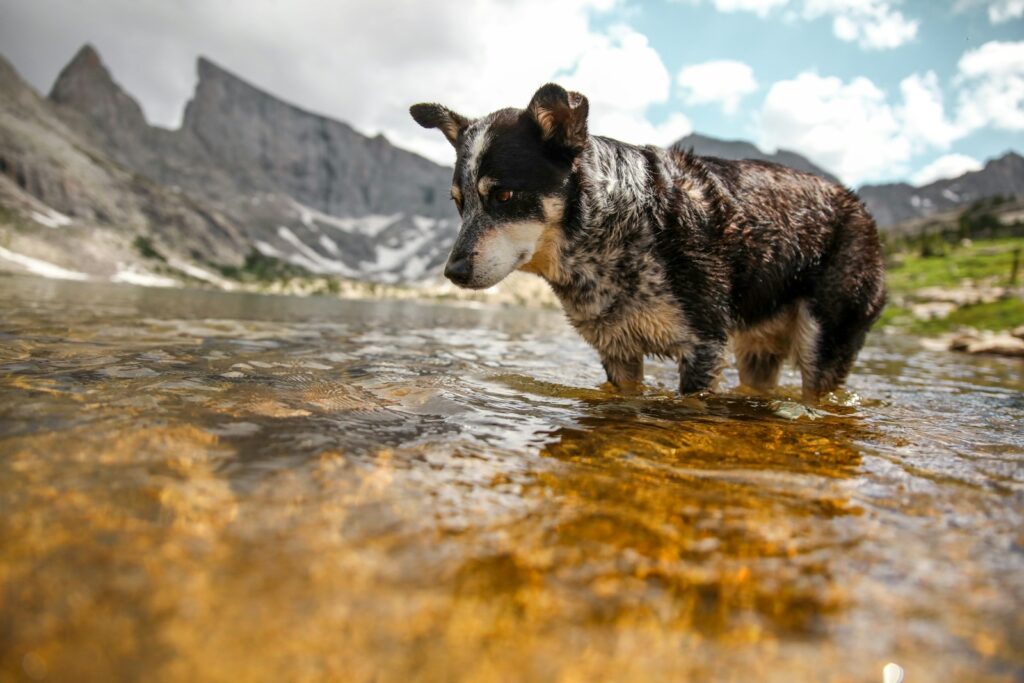
While technically a National River rather than a National Park, this stunning protected area administered by the National Park Service offers exceptional dog-friendly hiking along one of America’s few remaining undammed rivers. Leashed pets are welcome on all 100+ miles of maintained trails that wind through Ozark Mountains, past limestone bluffs, waterfalls, and through hardwood forests. The Goat Trail to Big Bluff offers a moderately challenging hike with spectacular views from 340-foot cliffs overlooking the Buffalo River, while the gentler Lost Valley Trail features a cascading stream, walkable cave, and 53-foot waterfall. Many trails provide river access points where dogs can cool off during warmer months, though always be aware of current water conditions before allowing your pet to swim. The park’s three designated wilderness areas offer more remote hiking experiences for those seeking solitude with their canine companions, though these trails often require higher fitness levels for both human and dog hikers.
Essential Tips for National Park Hiking With Dogs

Successful national park adventures with your dog require careful preparation beyond simply knowing which parks permit pets. Always carry sufficient water for both yourself and your dog, as natural water sources may contain harmful bacteria or be seasonally unavailable. Pack essential supplies including a collapsible water bowl, waste bags, a pet first aid kit, and possibly dog booties for rough terrain or extreme temperatures. Research specific seasonal considerations for your chosen destination, as summer heat can pose serious risks in desert parks, while alpine areas may experience sudden weather changes even in warmer months. Always respect wildlife by keeping your dog leashed and under control, as even the friendliest dogs can disturb native animals or encounter dangerous wildlife like bears, snakes, or porcupines. Finally, practice “leave no trace” principles by properly disposing of pet waste and ensuring your dog doesn’t damage sensitive vegetation or disturb cultural resources during your national park visits.
Exploring America’s national parks with your dog creates memories and experiences that deepen both your connection to nature and your bond with your four-legged companion. While pet restrictions exist to protect wildlife, sensitive ecosystems, and other visitors, the parks highlighted above offer remarkable opportunities to share outdoor adventures with your dog. By following park regulations, preparing appropriately for conditions, and respecting both the natural environment and other visitors, you’ll help ensure these spectacular places remain accessible to pets for generations to come. Whether you’re drawn to coastal explorations, mountain vistas, desert landscapes, or forested trails, there’s a national park experience waiting for you and your canine hiking partner to discover together.

